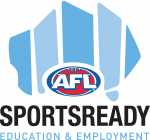Knowledge Exchange December
AusPlay survey results released by Australian Sports Commission
The Australian Sports Commission (ASC) recently released the results of the Ausplay survey – a large scale national population tracking survey funded and led by the ASC. This is great news for the sport sector, as there has been a lack of up-to-date national participation data since the release of the ABS Sport and Recreation: A Statistical Overview, Australia in 2012 and the ASC’s Participation in Exercise, Recreation and Sport (ERASS) in 2010.
What does AusPlay tell us?
AusPlay is divided into two overarching age categories: Children (age 0-14) and Adults (15 and over). The data provides participation estimates across a range of 135 different sport and non-sport related activities, from Cycling to Oztag, Crossfit, and even ‘virtual based physical activity’. It shows that at age 15 we prefer organisation/venue based participation, yet as we get older, ‘self-organised’ activities become more popular and organisation/venue based activities decrease. We also see that sport clubs are the most popular choice for children, yet for adults, more people who are active tend to participate through non-sport club providers.
Sport-related activities are those related to National Sporting Organisations (NSOs), including participation that occurs without direct affiliation to the NSO. For example, Netball, Cricket and Golf are all counted as sport-related activities. Non-sport-related activities are not related to NSOs and include gym/fitness activities, bushwalking and many more. Did you know that 0.3% of the adult population aged 18-24 do Parkour (you can read more here), or that Roller Derby is most popular among females aged 25-34?
AusPlay also provides data about activities that take place through an organisation or at a venue, (although for children, all activities are defined as ‘organised’ and take place outside of school hours). For each activity captured by AusPlay, respondents were asked if they had participated ‘through an organisation – like a club or a gym; or at a venue – like a pool or an oval’ and then, what type of venue had they participated in. For example, Golf is the top club sport activity for adults with an estimated 666,349 adults participating at a ‘sports club or association’. If we look at a non-sport-related activity such as Walking (Recreational), we see that 42% of the adult population participate in this activity, yet only 1.4% do it through an organisation or venue.
An existing new addition to this data is the frequency of children and adult’s participation sport and non-sport related activities. For example, 59% of adults participate at least 3 times per week, while just 54% of children are active (outside of school) at least once per week (in a organised activity – and this highlights the importance of school participation programs, not captured by AusPlay).
AusPlay also provides some valuable insights into the drivers and barriers of sport and non-sport related activities. The top 3 motivators across all activities are ‘physical health or fitness’, ‘fun/enjoyment’ and ‘social reasons’. The greatest motivation for women is physical health or fitness, while men are more likely to be motivated by social and fun reasons than women. We learn that time and other commitments is the biggest barrier to participation for ages 18-54, while for ages 65 and over the greatest barrier is poor health or injury.
Technology plays a large part, with apps and wearable technology the most popular type of technology used. Finally, large sums of money are spent on being active - $2.3 billion for children and $8.4 billion for adults.
What does this mean for my sport?
Using the Sport Data Tables (excel download), you can easily locate the population playing estimates for your sport, including the total participation by children/adults/males/females, the amount of participation through an organisation/venue, and the type of venue (e.g. sports club). This data will allow you to calculate the ‘latent’ demand for your sport – the gap between the estimated population playing and your actual registered members/participants. You can also analyse how your sport compares to other sport and non-sport related activities. Motivators and barriers are not segmented by activity, however, it is worthwhile to familiarise yourself with the key trends.
Governments at all levels will use the results to inform future sport policy, facility planning and provision, and program design to address barriers to participation. The ASC have done a fantastic job in putting this data together, however if you feel you have a different story to tell, it is important to use evidence-based information and data to inform you communication with governments and potential investors.
State-specific data will be made available in January 2017.
More Information
Check out the Summary of key national findings, the National Data Tables (excel), the Sport Data Tables (excel) or the AusPlay website.
You might also like to check out recent Victorian-based research reports by Sport and Recreation Spatial. They have released two reports based on the registered player data of 11 Victorian SSAs: Sport Participation Rates, 2015 and Age Profiles of Sport Participants, 2015.
Contact
If you would like to discuss the AusPlay survey with Vicsport, contact Tom Dixon – Participation Strategy Manager – on 9698 8106 or at tomd@vicsport.com.au.
Return to Knowledge Exchange or select your next article:
You may also be interested in...
Case Study: Lacrosse Victoria

We spoke to Sam Watson from Lacrosse Victoria about how they are going about increasing participation in Lacrosse through Quick Stix.
Knowledge Exchange October
Case Study: Building an evidence base to increase participation in Lawn Bowls

In 2012, Bowls Australia (BA) engaged with La Trobe University’s Centre for Sport and Social Impact to complete research into lawn bowls participation, with the goal to build a base of evidence to support decision making to increase participation
Getting Active in the West
Program Manager at South West Sport Andrew Sloane tells us how people are staying fit an active in Warrnambool and the surrounding areas.


























